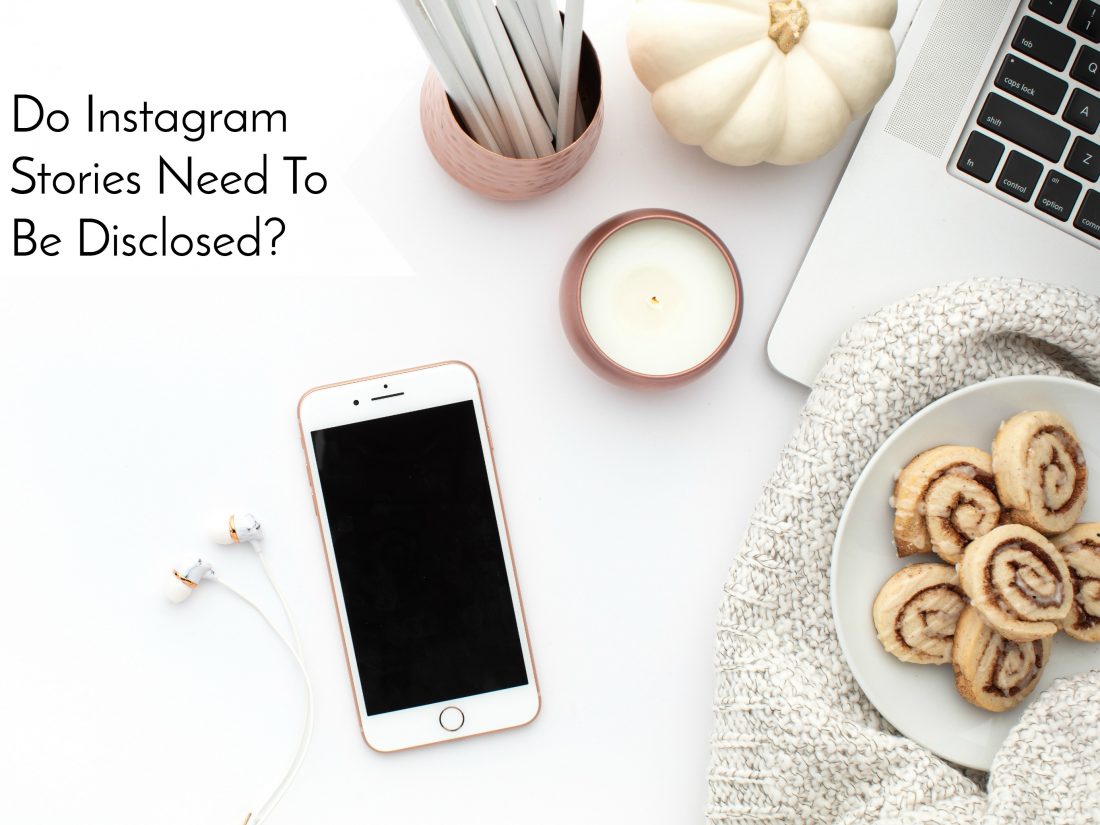As more and more creators include Instagram Stories in their content strategies, it was obvious that the need for disclosure would come up. Instagram Stories allows bloggers and influencers to give a behind the scenes look at how images have been created and gives the whole Stories feature a casual look at things. When people get casual talking about the stuff they’re doing, for bloggers and influencers, that then means talking about things they have been gifted or events or activities that they’ve been invited to, which of course brings about the question about whether Instagram Stories need to be disclosed.
It’s easy to think that a Story doesn’t need any disclosure – after all, they’re not a lasting item, and a lot of the time, the items/events that have gifted are just fitting into your daily life. However, there are good arguments to be had for them to be disclosed – mainly that if you hadn’t been given the item or invited to the event, would you still be posting about it?
We have always encouraged over disclosure – that it is better to disclose when something has been given to you, even if you don’t think it’s necessary. A good thing to look at is Influenster, who send out products to people to be reviewed online. Many of the products that they send out will have a task where the influencer that has received the product is asked to post on Instagram Stories or Snapchat about their first impressions. One of the things that they will request as part of that is for the influencer to specifically say they received the product for review. (Check out their disclosure page for more details about how they ask for items to be disclosed – it’s actually a really good place to start when considering how to disclose)
The FTC (Federal Trade Commission, the US agency that deals with blogging and social media disclosures among other things) says this on disclosure in disappearing media:
It should be easy to notice & read in the time that your followers have to look at the images. #Influencers101
— FTC (@FTC) September 20, 2017
Taking this into consideration, we would recommend being specific about what happened in the first Story/Snap, then in all posts following, using the hashtag #ad (just pop it in the corner so it’s still easily visible in each post but isn’t taking over!). Just because Stories and Snaps disappear after 24 hours doesn’t mean you shouldn’t disclose – anyone can take a screenshot or record a series of Stories/Snaps using screen recording features and submit them to the relevant agencies for further action.
Of course, Instagram does have their branded content tool, however that is still (frustratingly) limited to certain accounts. While it almost makes sense that Instagram restricts the “swipe up” feature to those accounts over 10k (giving users something to aspire to), not giving all users who want it access to the branded content tool is ridiculous, as it encourages non-disclosure. (This also goes against Instagram’s own moves to notify creators when items should be disclosed! )






